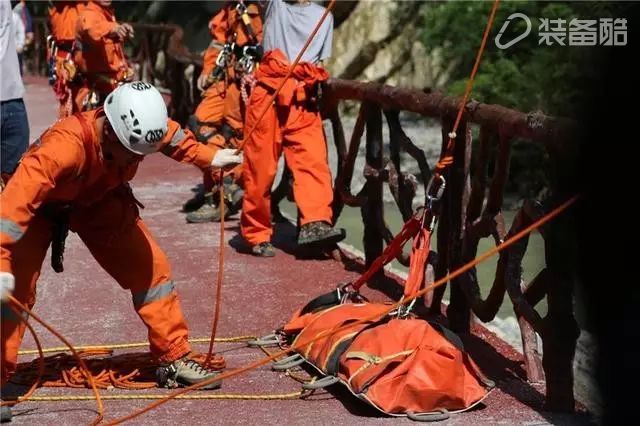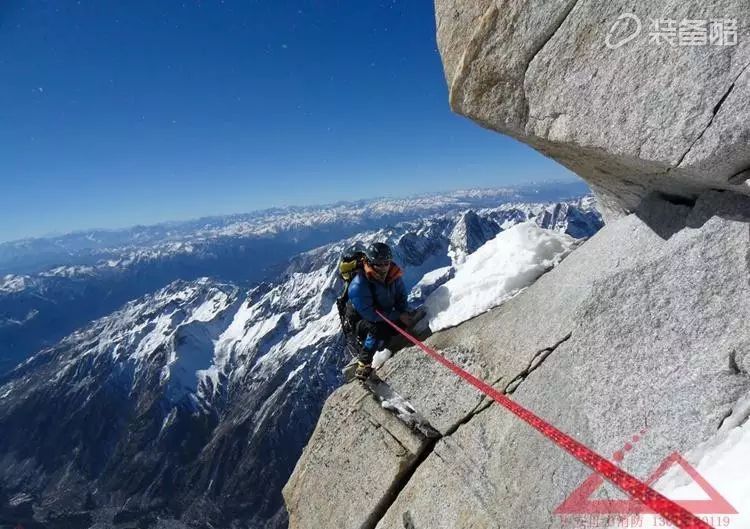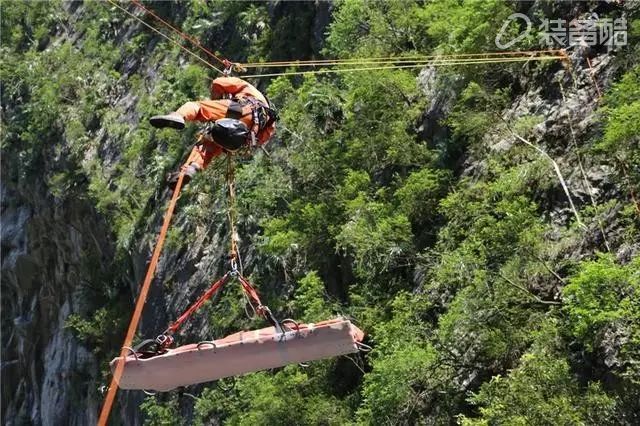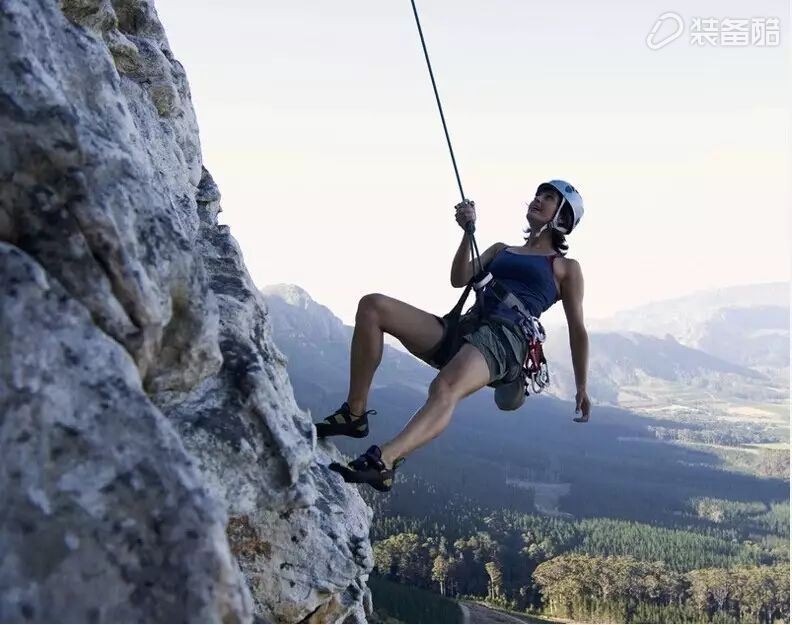Outdoor rope is a must-have outdoor equipment, and what we need first is its lightweight characteristics without affecting performance. We cannot ask everyone to carry a standard 50-meter master rope anywhere. Therefore, the weight of the rescue rope we need should be controlled at about 500 grams. According to the environment and needs of use, the rescue rope we defined here does not carry the climbing function, so the outdoor rescue rope should generally have the following characteristics:
Length 15 meters - 20 meters. The rope diameter is between 7mm-8mm. Less than 3% ductility (static rope). Professional climbing ropes with a static tension of 500KN (approx. 500kg). The price is relatively low (because it is not used for climbing and downhill, consider using domestic ropes).
All seasoned leaders or those of us who master them understand the truth. The simplest method is the best method. The best method is to use the simplest tools to complete the most complex tasks. Following this idea, many simple and effective outdoor techniques have been invented after many years of exploration and testing. So far, there is almost no standard equipment that cannot be replaced by simple methods. For example, the knot can replace the riser in special circumstances, and Italy half-buckle can replace the descender. The use of rescue ropes and other auxiliary equipment we are going to follow here also follows this principle.
The first move: single knot braided seat belt
In the early years, it was more popular to make simple seat belts with two flat belts. One of the big disadvantages of this approach is that it is usually found that if there is no master rope and the master lock is connected to it, it has almost no use value. Therefore, the practicality and popularity of this method are relatively poor. The method of making a simple seat belt with a single knot here has a high practical value.
The specific method is as follows: Take one end of the 15m rescue rope, take the 90% length of the two arms and fold it into 5 strands. Take the middle point and make a single knot. After the rope is unrolled, there will be 4 loops, and the legs and arms will be used as a full body harness. If the rope is not long enough, you can also fold four strands to make three rings. Wearing a ring on the upper body can also be a full body harness.
Typical case operation:
River crossing activities. When the water flow is more acute, the first Pathfinder needs to pass under protection. In this case, the rescue rope can be used to make the seatbelt. The main protector holds the long end of the rope to protect it in the upstream direction of the river. The auxiliary protector and the Pathfinder use another rope to perform protection on the same plane. Under extremely steep terrain conditions, it is often impossible for some vulnerable players to complete climbing and descent by their own strength. Use this method and add Italian half-knot (can use the tree or other column as the master lock) can be easily completed. In the case of assisted transport by the wounded, in the case of some steep slopes, the transport of the wounded was not convenient for the use of a stretcher, and it was necessary to rely on people. Whether it is rising or falling, bearers cannot independently pass obstacle terrain. At this time, a simple seat belt controlled and assisted by the bearer can solve the problem.
The second measure: double knot making stretcher and backpack stretcher
All the four trekking poles (or two wooden sticks) received the shortest, two rows in two rows to become the main frame of the stretcher, the width of the wound is generally controlled between 0.7 meters and 1 meter, according to the body width of the injured person. A rescue rope is alternately laid back and forth between the main supports in a water-like pattern, and then several pairs of joints are used to connect the rope to the support. The main body of the stretcher is completed, and the moisture-proof pad or backpack and the sleeping bag can be used as a practical rescue stretcher.
Mountaineering bag making stretcherThe two mountaineering bags are connected end to end, and the straps of all the shoulder straps are extracted from the connecting buckles, and then two backpacks connect the shoulder straps to the connecting buckles of the other backpack, so that the two backpacks become a whole. At this time, the two belts and two chest straps of the backpack can just fix the wounded person, and the shoulder strap can be the best handle for the transporter.
When the conditions permit, it is best to use the stretcher made by the above two methods. If it is long-distance transportation, in order to reduce the strength of the rescuer when lifting the hand, you can use other rescue ropes to connect the stretcher and the rescuer's shoulders, so that the power transferred to the shoulders. This saves power and is more stable and safe.
The third measure: rope back people
In all cases, stretchers can be used for transport of the sick and wounded. In some special circumstances, the transport of wounded and sick people outside the country must still use the most primitive method - human burden. For example, lack of rescue force or special steep terrain.
Ring making method:
Set the rescue rope into a regular half-length rope loop to secure the bound rope loop with the knot. The rope is equally divided into two strands, making it a figure eight, straps Serve. Bring the straps to the shoulders, let the wounded legs penetrate into the two rope loops respectively, and use the other rope (or the rope tail of the same rope) to cross the wounded and the bearer. It is safe and relatively easy to carry the wounded.

The fourth measure: the use of a simple chest harness with a road rope
In most outdoor activities, we have to pass through some dangerous terrain. Usually, our approach is to use a rope relay to pass through. Although this method relieves the security risks to a certain extent and provides a method to pass obstacles, it is insecure under many relatively extreme terrain conditions. Passage through the hand does not guarantee the adoption of the entire process. Everyone is in absolute protection. For example, some slippery slopes with a slope of more than 60 degrees, ascend, descend, and crosscut movements, must be connected by means of a simple seat belt and a rope to be able to pass safely. Assume that in the absence of a standard seat belt and only a rescue rope for connecting equipment, making a simple chest harness is an efficient and safe method.
Passing uphill or downhill terrainAfter fixing the rope (rescue rope), each passer will make his own rescue rope into a bundle of ropes and leave a suitable length of the rope tail. The rope loop passes through the head and neck shoulders. The rope tail is connected to the rope by means of a single rope, so that a two-way interlocking relationship is formed between the person and the rope. It can be used for climbing and descent on steep slopes, ensuring that people are absolutely guaranteed at all times throughout the passage. One of the two main points of making a single rope knot is that the number of kinks in the same diameter rope is generally larger and must be tested for its effectiveness. The second is that the Bollinger knot must be reliable when the knot ends.
Cross-cut terrain passUse the same method as above to make the rescue rope into a loop. Before the road rope is fixed, pass the loop into the loop. When passing, each person puts on a rope and begins to cross. You can also use the above method of making a knot to cope with cross-cut terrain.

The fifth measure: rescue rope other general purpose
The above-mentioned rescue rope use method is just a few kinds of uses and methods that people are not familiar with. In fact, a rope can play a role in outdoor travel far beyond these. Various functions such as traction, pulling, high-lifting, binding, and so on can be used in a variety of outdoor activities such as canyoning, caving, canoeing, cycling, and driving. The safety features such as wind rope, clothesline, knot practice, water depth measurement and so on.
Each method was invented and created in the course of continuous practice, just as the original Prussian knot was because its inventors were bundled in ice crackers to do it with shoelaces. Over the past few years, we have been learning about foreign technologies and methods. We believe that if our huge group of donkeys can pay more attention to safety-conscious technologies, more new technologies and methods will be produced in the near future. . Of course, what is more important is that we need more people to regard basic safety knowledge and safety equipment as necessary conditions for participating in outdoor activities, so that our outdoor environment can be more happy and less tragedy.
Dining Table,Coffee Table,Classic Round Dining Table,Round Glass Coffee Tables
Ningbo Realever Enterprise Limited , https://www.realeverfurnishing.com
